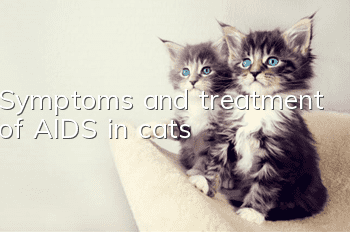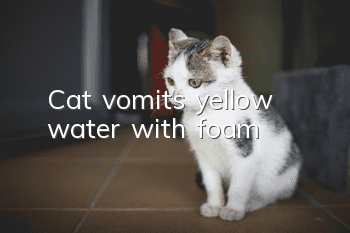Symptoms and treatment of AIDS in cats

Cats infected with feline AIDS will develop symptoms similar to human AIDS immunodeficiency, but feline HIV cannot be transmitted to humans. Feline HIV is caused by infection with the virus "lentivrus" and is generally only transmitted through bites from stray cats. The infection mechanism is similar to that of human HIV in that it destroys the immune system.
【Symptoms】
Symptoms most commonly associated with feline AIDS include: chronic stomatitis, severe gingivitis, chronic upper respiratory tract disease, weight loss, fever, lymphadenopathy, anemia, chronic diarrhea, motor or sensory nerve damage, and chronic skin disease.
Cats with chronic skin disease infections may develop infections including scabies, scrub typhus, trichocystis, and various fungal and bacterial infections.
【Diagnosis】
To diagnose whether a cat is infected with AIDS, the only current clinical diagnostic method is to test three drops of a cat's blood in ten minutes. However, this may cause false positive reactions, so clinical veterinarians must analyze it carefully.
If a cat shows a positive reaction, it should be retested after a period of time, because although most cats will develop antibodies within a few weeks of being infected with feline AIDS, some cats will remain antibody negative for up to a year, and some cats will remain negative for up to a year. Severely ill infected cats may have a large amount of feline HIV combined with all antibodies, or may be completely immunosuppressed by feline AIDS, with only a small amount of antibodies detectable or negative for antibodies.
【Group with high incidence of feline AIDS】
The high-risk groups for feline AIDS are adult, male, and free-range cat groups. Because feline AIDS is mainly transmitted through bites, purebred cat breeding farms usually have more stable group characteristics and fewer cat fights. Therefore, the incidence of feline AIDS is relatively low.
【Treatment method】
When it is determined that a cat is infected with feline AIDS, the secondary infection should be controlled first and the clinical symptoms relieved. The specific treatment method should be formulated based on the cat’s symptoms.
【Prevention Methods】
Only raise one cat, or just a few. It is best to completely avoid letting cats fight and go out.
Whether it is a newly introduced cat or an original cat infected with feline AIDS, new cats should not be allowed into the cat group, because if a new cat joins, it will inevitably lead to territorial fighting behavior and increase the risk of feline AIDS infection. danger.
Feline AIDS has beenThere have been cases of cure, so owners should never give up after learning that their cat has feline AIDS!
- Why not get a Siamese cat?
- Will a cat's flesh pads heal on their own if they are cut?
- Is it true that you can trap a cat by drawing a circle? Don’t kid me!
- Why does a hairless cat have a lot of eye mucus in its eyes? Is it conjunctivitis?
- What should I do if my skin is broken by a Ragdoll cat bite? How to treat a Ragdoll cat bite!
- What are the reasons why cats have less hair?
- How to tame a stray cat? Tips for taming a stray cat!
- Can cat angular stomatitis heal on its own? Both the cat and you want to know!
- What kind of cheese cat is it? Popular science about cheese cat types!
- What could be the reason for a cat’s sudden peeing?



